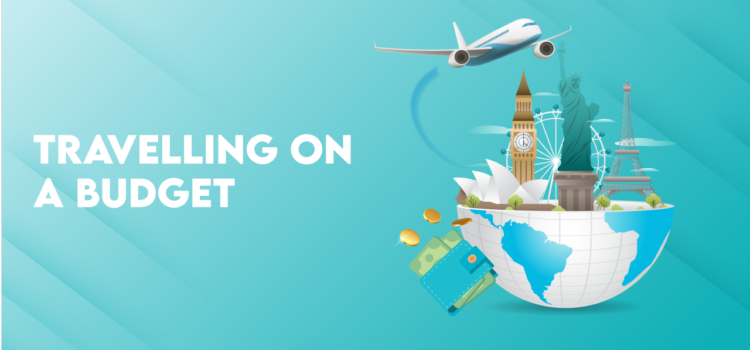
The call of the wild taps into something deep within the human spirit, enticing many with its siren song of adventure and exploration. The appeal of immersing oneself in nature, whether trekking through lush forests, scaling craggy peaks, or paddling along meandering rivers, is universal. Outdoor activities provide a departure from the daily grind, an opportunity to challenge oneself physically and to find tranquility away from urban clamor.
Yet, nature’s allure doesn’t come without its price tag. Ensuring your excursions don’t lead to excessive financial strain requires thoughtful consideration, effective budget management, and strategic planning.
After all, the freedom of the outdoors shouldn’t equate to a burden on your wallet. For those who appreciate nature’s bounty and value fiscal prudence, click here to discover a pathway to discounts that can elevate your outdoor experience without an extravagant outlay.
Key Takeaways
- Effective planning and research are fundamental for cost-effective outdoor pursuits.
- Investing in quality gear can be economically wise if focused on necessary items.
- Seasonal sales provide opportunities for substantial savings on gear and travel.
- Couponing and discounts from outdoor organizations can significantly reduce expenditures.
- Environmental sustainability and budget-conscious outdoor adventuring go hand in hand.
The Appeal of Outdoor Activities
Many people find that the allure of the great outdoors comes from a desire to get away from the confines of our disciplined, technologically driven lives. Nature offers an unfiltered connection to the world around us—one that is increasingly rare in our digital age. The psychological and physical benefits are well-documented; researchers have found that time spent in nature reduces stress, enhances mood, and boosts overall well-being.
In addition, engaging in outdoor activities exposes individuals to various experiences that suit different interests and skill levels.
These experiences range from calm nature hikes for the casual enthusiast to extreme sports that require intense energy for the more daring ones. This broad spectrum of engagement makes the outdoor experience so widely cherished and continually sought after.
Budgeting for Outdoor Adventures
The foundation of any successful outdoor venture is a solid financial plan. The key to budgeting effectively for an adventure is to itemize each projected expense. This list should encompass every aspect of the journey, including travel costs, gear and equipment, food and provisions, permits and fees, and any other miscellaneous expenses that may arise.
Furthermore, keeping a separate fund for unforeseen circumstances can prevent minor inconveniences from escalating into full-blown financial headaches.
Mindful planning and anticipating potential costs can make the difference between a financially feasible trip and one that deviates recklessly from your financial constraints. Creating a thorough budget is the first step to an enjoyable and responsible outdoor experience.
Research and Preparation: Key to Affordable Outings
Research and preparation are the intrepid explorer’s best tools for cost-effective adventures. In today’s digital era, a wealth of information is available at our fingertips to help plan every aspect of an outing. Insightful resources, such as this comprehensive guide on outdoor trip planning strategies, are invaluable in offering tips on preparation, gear selection, and unexpected challenges you may encounter.
Knowledge of the terrain, weather, and local regulations can also lead to more brilliant packing and provisioning, ensuring that you bring what is necessary and avoid last-minute purchases that can bloat your budget. A well-researched plan is a blueprint for adventure that won’t cost the earth.
Timing Your Purchases: Seasonal Discounts and Sales
Timing is everything when outfitting yourself for outdoor activities on a budget. Retailers often offer deep discounts on equipment and clothing during end-of-season sales. For instance, winter gear prices typically plummet in the spring, and summer items are repeatedly slashed in the fall. Cyber Monday, Black Friday and holiday sales are prime opportunities for significant savings.
You can easily find high-quality equipment at a significantly reduced price by subscribing to newsletters and alerts from your preferred outdoor retailers. Thanks to this, you’ll be informed about impending sales, promotions, and clearance events.
Additionally, when tourist traffic is lower, planning your trips during the shoulder seasons can yield savings on everything from travel and lodging to guided tours and activities.
Utilizing Discount Codes and Coupons for Outdoor Gear
For the price-conscious adventurer, coupons and discount codes are a treasure trove of savings. Scouring the web for deals can substantially cut down on expenses, whether you’re stocking up on provisions or investing in a new pair of hiking boots. Websites are hubs for finding and applying these cost-reducing codes to your online purchases.
Additionally, other resources provide strategic advice on maximizing savings; for instance, this detailed guide on scouting outdoor gear deals outlines the art of effective coupon use. By harnessing the power of discounts, the cost of gearing up for your next adventure can become much more manageable.
Food and Provisioning: Eating Well on a Budget
Adequate nutrition is fundamental to any outdoor activity, but dining al fresco doesn’t have to be lavish. Planning meals allows for a strategic approach to food spending. Focus on packing versatile staples such as rice, pasta, beans, and canned vegetables, which can be combined to create nutritious and satisfying meals.
Dehydrated meals are also convenient, offering a lightweight, compact, and calorie-dense solution that can be quickly rehydrated on the trail. By prepping food at home and avoiding convenience purchases, you control the ingredients and portions and keep your food budget in check. Remember, efficient provisioning is about balancing economy, nutrition, and simplicity.
Free and Low-Cost Campsites and Trails
In pursuit of an economical adventure, pay attention to the abundance of free and low-cost resources available to outdoor enthusiasts. Public lands often offer free or inexpensive camping options with amenities, serving as gateways to vast networks of trails and natural beauty. User-friendly apps and websites dedicate themselves to cataloging these sites, making it easier than ever to find a place to pitch your tent without depleting your funds.
Adhering to responsible use policies is critical when setting up camp to ensure these areas remain accessible and pristine for future visitors. Abiding by the “Leave No Trace” principles demonstrates respect for the environment and helps avoid potential fines or fees from breaching regulations.
Joining Groups and Organizations for Discounts and Advice
Becoming a member of an outdoor or conservation group is not merely a social decision but a strategic financial one. Many organizations offer benefits such as discounts on gear, access to members-only sales, and reduced prices on courses and expeditions. These affiliations can also extend to partnerships with lodges, parks, and travel companies, providing further opportunities for discounts and savings.
Beyond the monetary advantages, membership brings a wealth of knowledge and experience from fellow outdoor enthusiasts. Their tips and tricks, garnered from years of exploration, can prove invaluable in planning your adventures efficiently and inexpensively. Embracing the communal spirit of these groups can significantly enhance both the experience and affordability of your outdoor pursuits.
Investing in Quality Gear: A One-Time Expense That Saves in the Long Run
Regarding outdoor gear, the initial price tag can deter many. However, investing in quality equipment should be considered a long-term saving strategy. Well-crafted gear that withstands the elements and the wear and tear of rigorous use means fewer replacements and repairs over time. It is prudent to allocate more of your budget to essential items that ensure safety and comfort, like reliable footwear, a sturdy tent, or a durable backpack.
Quality is paramount for items such as specialized clothing or activity-specific tools, as these pieces are often integral to the success and safety of your outdoor endeavors. As an added benefit, high-quality gear often comes with better warranties or guarantees, offering peace of mind alongside longevity.
Conclusion
Environmental stewardship and frugality often align within the context of outdoor activities. Sustainable practices such as minimizing waste, repurposing and repairing gear, and conserving resources have a positive impact not only on the environment but also on your budget. Investing in reusable items like water bottles, cooking equipment, and solar-powered devices can reduce the recurring cost of disposables and single-use products.
Additionally, traveling more eco-friendly—carpooling, using public transportation, or traveling by bike—can significantly save on fuel and maintenance costs associated with solo vehicular travel. These practices foster a more sustainable relationship with nature, ensuring the enjoyment of the great outdoors for generations while also being a testament to economical, conscious living.









Comments
Best-Selling & Trendy Watches for Kids You Must Buy This Season